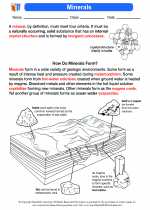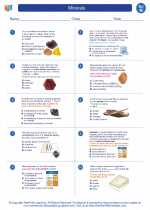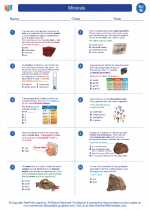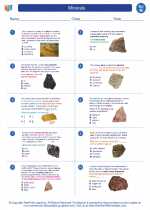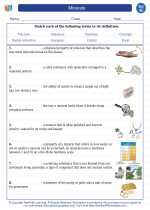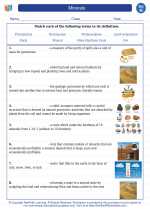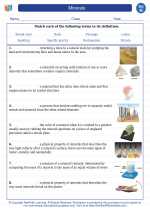Minerals -> geological features
Geological Features
Geological features are the various formations and structures that make up the Earth's surface. These features are the result of processes such as erosion, volcanic activity, tectonic plate movement, and sedimentation. Studying geological features provides insight into the Earth's history and can help us understand natural phenomena such as earthquakes, landslides, and the formation of natural resources.
Types of Geological Features
There are several types of geological features, including:
- Mountains: Large landforms that rise above the surrounding terrain, typically formed through tectonic activity or volcanic eruptions.
- Valleys: Low-lying areas between mountains or hills, often carved out by the flow of water over time.
- Plateaus: Flat, elevated landforms with steep sides, often the result of tectonic uplift or volcanic activity.
- Canyons: Deep, narrow valleys with steep sides, usually formed by the erosion of rivers or tectonic activity.
- Caves: Underground cavities formed by the dissolution of limestone or other soluble rocks.
- Volcanoes: Conical mountains formed by the accumulation of volcanic material such as lava, ash, and rock fragments.
- Glaciers: Large masses of ice that slowly move across the land, shaping the landscape through processes of erosion and deposition.
- Plains: Flat or gently rolling landforms often created by the deposition of sediment by water, wind, or ice.
Study Guide
To study geological features, it's important to understand the processes that contribute to their formation. Here are some key concepts to focus on:
- Erosion: Learn about the various mechanisms of erosion, including water, wind, and ice, and how they shape the Earth's surface over time.
- Tectonic Activity: Understand the movements of the Earth's tectonic plates and how they lead to the formation of mountains, valleys, and other landforms.
- Volcanism: Explore the processes involved in volcanic eruptions and how they contribute to the formation of volcanic features such as mountains and lava plateaus.
- Sedimentation: Study the deposition of sediment by natural agents such as rivers, wind, and glaciers, and how it contributes to the formation of plains and other flat landforms.
- Geological Time Scale: Familiarize yourself with the concepts of geological time and the vast timescales over which geological features have formed.
Additionally, field studies and hands-on activities such as rock and mineral identification, map reading, and geological site visits can provide valuable insights into the characteristics and formation of geological features.
By understanding the processes and characteristics of geological features, we can gain a better appreciation of the dynamic forces that have shaped the Earth's surface over millions of years.
.

